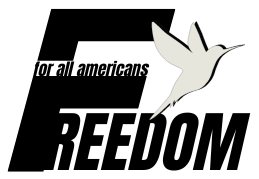In an era where information moves faster than ever, technology has become one of the most powerful allies for human rights advocacy. Digital tools are now central to mobilizing supporters, documenting abuses, and holding perpetrators accountable.
From exposing police brutality to tracking war crimes, technology gives campaigners an edge in speed, scale, and impact.
With that said, we have prepared a list of 10 proven tech solutions that have transformed the way human rights campaigns operate. Let’s take a closer look.
Table of Contents
Toggle1. Social Media Platforms
Social media remains one of the fastest ways to spread information and rally support. Campaigns use platforms like Twitter, Instagram, and TikTok to share real-time updates, organize protests, and create global awareness.
The Black Lives Matter movement is a clear example. After George Floyd’s death in May 2020, activists shared videos and calls to action that went viral, sparking demonstrations worldwide and prompting policy changes in multiple U.S. cities. Hashtags such as #BlackLivesMatter reached millions within hours.
Why It Works
- Real-time communication
- Direct access to global audiences
- Low barriers to participation
Impact stat: According to Shorty Awards, within less than two weeks, there were 1.1 million #HeForShe tweets by more than 750,000 different users, reaching 1.2 billion unique Twitter users.
2. Mobile Reporting Apps
Specialized apps allow individuals to document human rights abuses securely, often in places where traditional media cannot operate.
For example:
- HarassMap in Egypt lets users send SMS reports of harassment, which are then mapped to highlight unsafe areas.
- eyeWitness to Atrocities captures photos and videos embedded with metadata for use as verified legal evidence.
These apps have been critical in countries where underreporting is common, such as in domestic violence cases, where up to 70% of incidents never reach authorities, as per Kwantlen Pressbooks.
Why It Works
- Secure, anonymous reporting
- Evidence suitable for legal proceedings
- Real-time mapping of incident hotspots
3. AI for Crisis Monitoring and Hate Speech Detection

Artificial intelligence can scan enormous datasets: news feeds, social media, and satellite images, to detect early signs of human rights crises.
Organizations like the United Nations use AI to identify patterns in infrastructure damage during conflicts, while Amnesty International applies it to monitor attacks in war zones. AI-powered natural language processing can also flag hate speech before it spreads widely.
Real example: In Myanmar, AI tracked online incitement against minorities, aiding accountability efforts.
Impact stat: According to PNNL, an AI algorithm for power grid emergency control reduced affected customers by 20–65% and cut grid recovery time by 16% on average in simulated test environments
4. Big Data Analytics for Identifying Violations
Big data tools help activists piece together information from diverse sources, such as satellite imagery, mobile phone data, and social media, to identify trends in abuses.
Example: Amnesty International has used big data to document forced displacements, while investigative outlets have exposed algorithmic bias in judicial systems.
Why It Works
- Reveals patterns invisible to traditional monitoring
- Provides hard evidence for advocacy and litigation
- Enables targeted interventions
Impact Stat: Predictive analytics can identify at-risk communities before violence escalates.
5. Secure Communication and Encryption Tools
In repressive regions, surveillance is a real threat to activists. Encrypted messaging apps, such as Signal or secure platforms developed by human rights labs, protect communications from interception.
Example: In Mexico, where journalists face digital spying, encrypted tools have safeguarded whistleblowers and reporters investigating corruption.
6. Online Petitions and Crowdsourcing Platforms
Petition platforms like Change.org and Avaaz can rally massive public pressure in a short time. Crowdsourcing, whether for funds or ideas, extends this reach.
Example: In 1991, the Moroccan women’s organization l’Union de l’Action Féminine (UAF) collected one million signatures on a petition calling for reform of the family law (Mudawana).
They delivered it to the Prime Minister, and it helped catalyze reforms, which culminated in a 2004 overhaul of the Mudawana law
Why It Works
- Low entry point for participation
- Builds visible proof of support
- Generates media attention
7. Satellite Imagery and Remote Sensing

Satellite technology is a game-changer for gathering evidence in hard-to-reach areas. High-resolution images can verify attacks, environmental destruction, or population movements.
Example: According to The Guardian, satellite and imagery analysis, whether from satellites, drones, geospatial tools, or mobile footage, has clearly been instrumental in documenting abuses, exposing atrocities, and supporting human rights efforts in many conflict zones (e.g. Myanmar, Burundi, Nigeria, Darfur, North Korea, Gaza, Syria)
8. Blockchain for Transparency
Blockchain technology ensures that records, from donations to voting results, are tamper-proof. In human rights work, this builds trust and prevents fraud.
Example: In Sierra Leone’s 2018 election, blockchain verified votes, increasing public confidence. Aid organizations use blockchain to track funds and ensure resources reach the intended recipients.
Why It Works
- Immutable, transparent records
- Reduces opportunities for corruption
- Can operate across borders
9. Virtual Reality for Awareness Building

Virtual reality puts audiences in the middle of human rights stories, creating emotional connections that statistics alone can’t achieve.
Example: UN campaigns have used VR to simulate life in refugee camps, influencing public support and policymaker engagement.
Impact stat: Studies show VR experiences can increase empathy levels by 45% compared to traditional media.
10. Data Visualization and Analytics Tools
Clear visuals make complex data more accessible for the public, media, and policymakers.
Example: HarassMap’s interactive charts guide local authorities on where to focus safety measures. UN crisis dashboards help coordinate international aid responses.
Why It Works
- Simplifies complex data
- Helps audiences grasp urgency quickly
- Strengthens policy advocacy
Impact stat: Visualization tools can increase stakeholder engagement by 30%.
Bringing It All Together
Human rights campaigns are most effective when they combine multiple tools into a cohesive strategy.
For example, activists might use encrypted communications to coordinate, mobile apps to gather evidence, big data analytics to identify patterns, and social media to mobilize public support.
The power of these tools lies in their thoughtful use. Technology can amplify voices and protect vulnerable communities, but it also carries risks like surveillance, misinformation, and digital exclusion.
The most impactful campaigns invest in training, ethical safeguards, and community partnerships to ensure that technology serves justice, not the other way around.
Related Posts:
- What Is the Most Dangerous Country in the World in 2025
- Safest Countries in the World in 2025 - GPI…
- 26 Most Dangerous Cities in US - Updated Statistics for 2025
- How to File a Claim After Getting Hurt at a Political Rally
- America's Murder Capitals: A 2025 Ranking of the…
- 17 Worst Prisons in the US in 2025 - America's…








